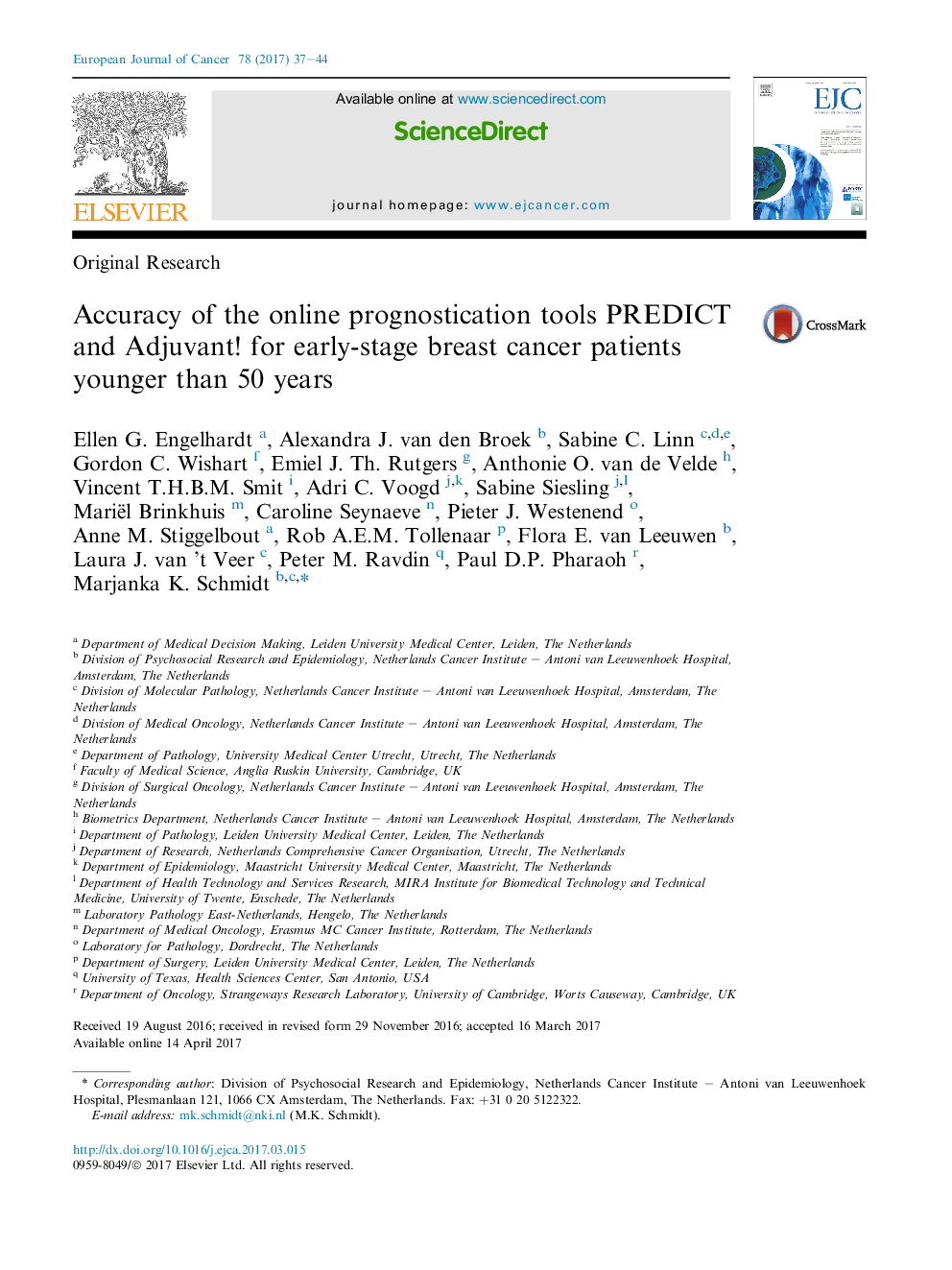| کد مقاله | کد نشریه | سال انتشار | مقاله انگلیسی | نسخه تمام متن |
|---|---|---|---|---|
| 5526285 | 1547054 | 2017 | 8 صفحه PDF | دانلود رایگان |
- PREDICT all-cause mortality estimates are suboptimal for patients â¤40 years and those with <20 or >40% mortality probability.
- PREDICT overestimates breast cancer-specific survival across multiple patient subgroups.
- Adjuvant! discriminatory accuracy and calibration are in line with PREDICT's.
- Although these tools' estimates of all-cause mortality are reasonably sound, oncologists must interpret them with caution.
ImportanceOnline prognostication tools such as PREDICT and Adjuvant! are increasingly used in clinical practice by oncologists to inform patients and guide treatment decisions about adjuvant systemic therapy. However, their validity for young breast cancer patients is debated.ObjectiveTo assess first, the prognostic accuracy of PREDICT's and Adjuvant! 10-year all-cause mortality, and second, its breast cancer-specific mortality estimates, in a large cohort of breast cancer patients diagnosed <50 years.DesignHospital-based cohort.SettingGeneral and cancer hospitals.ParticipantsA consecutive series of 2710 patients without a prior history of cancer, diagnosed between 1990 and 2000 with unilateral stage I-III breast cancer aged <50 years.Main outcome measuresCalibration and discriminatory accuracy, measured with C-statistics, of estimated 10-year all-cause and breast cancer-specific mortality.ResultsOverall, PREDICT's calibration for all-cause mortality was good (predicted versus observed) meandifference: â1.1% (95%CI: â3.2%-0.9%; P = 0.28). PREDICT tended to underestimate all-cause mortality in good prognosis subgroups (range meandifference: â2.9% to â4.8%), overestimated all-cause mortality in poor prognosis subgroups (range meandifference: 2.6%-9.4%) and underestimated survival in patients < 35 by â6.6%. Overall, PREDICT overestimated breast cancer-specific mortality by 3.2% (95%CI: 0.8%-5.6%; P = 0.007); and also overestimated it seemingly indiscriminately in numerous subgroups (range meandifference: 3.2%-14.1%). Calibration was poor in the cohort of patients with the lowest and those with the highest mortality probabilities. Discriminatory accuracy was moderate-to-good for all-cause mortality in PREDICT (0.71 [95%CI: 0.68 to 0.73]), and the results were similar for breast cancer-specific mortality. Adjuvant!'s calibration and discriminatory accuracy for both all-cause and breast cancer-specific mortality were in line with PREDICT's findings.ConclusionsAlthough imprecise at the extremes, PREDICT's estimates of 10-year all-cause mortality seem reasonably sound for breast cancer patients <50 years; Adjuvant! findings were similar. Prognostication tools should be used with caution due to the intrinsic variability of their estimates, and because the threshold to discuss adjuvant systemic treatment is low. Thus, seemingly insignificant mortality overestimations or underestimations of a few percentages can significantly impact treatment decision-making.
Journal: European Journal of Cancer - Volume 78, June 2017, Pages 37-44
